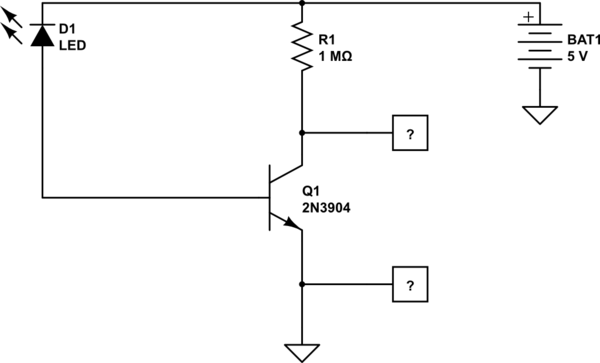I've been trying to make some cheap light sensors using some coloured LEDs and am using the schematic below. The idea is to hook up a bunch of LEDs (Red, Green, Blue etc.) to try and get an idea of the light wavelengths that they are being exposed to.
I've set up the circuit and am testing the voltage across the 2n3904 (using these since I had some on hand) at the points represented by the [?]. I've tried a few different resistors (100kOhm, 440kOhm, and now 1MOhm playing around with the gain). Power supply is from a 5v 3A mains adapter.

simulate this circuit – Schematic created using CircuitLab
This is what the scope output looks like when its dark:
 This is what it looks like when it is uncovered (i.e. daylight)
This is what it looks like when it is uncovered (i.e. daylight)

If I put a light source right on top of the LED, the signal minima drops to 0V. I was expecting a 0v DC signal in the dark which would max out at 5v as the LED is exposed to light.
Are my scope traces normal?
If not, what am I not (read: incorrectly) considering in this circuit.

